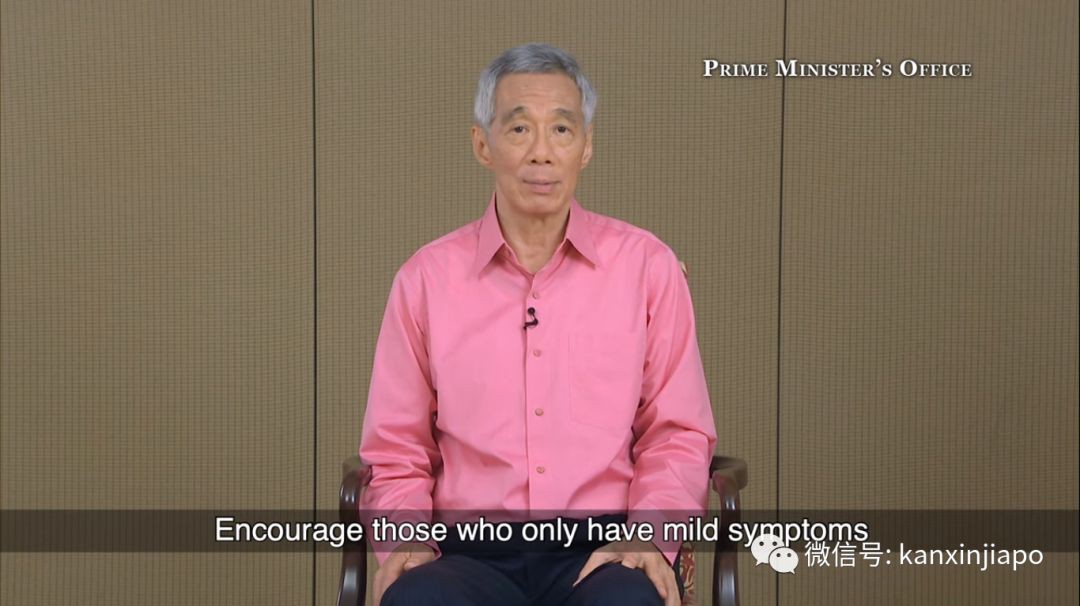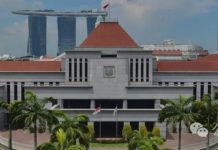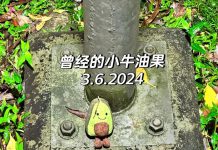针对新冠病毒肺炎疫情,新加坡总理李显龙首次发表总理声明。
他说:“如果确诊病例持续增加,我们必须重新审视当前的策略。如果病毒已经扩散,追踪密切接触者的作用微乎其微。如果我们继续让所有可疑病例住院隔离,医院肯定无力支撑。”

他也说:“到了那时,如果新冠肺炎的致死率维持0.2%低水平,就如流感(0.1%),那么我们的策略就必须调整。轻微症状病人看家庭医生,在家休养,让医院集中资源照顾最有需要的——老人、小孩和那些有并发症的病人。”
他强调:“目前我们还没走到那一步。将来可能会走到那一步,也可能不会。不过,我们要先预想到那个可能性,并且先做好接下来几步的策划。我现在跟大家提出这些可能性,让我们大家都做好心理准备。”
李显龙也说,我每年春节在总统府办基层领袖的慰劳会,今年本来是明晚举办的,我把它延后了。我们不是第一次把DORSCON调高到橙色,我们在2009年H1N1时也做过。因此,大家不必惊慌。我们不会封城,也不会强制所有人隔离在家不准出门。我们物资储存足够,不必惊慌囤货。
他说,接下来,新加坡政府会继续追踪密切接触者,将他们隔离。但是,他相信,接下来几天会有更多不明感染源的确诊病例出现。
如果局势发生改变,到时政府就会调整策略。
新加坡眼评论:
一些网友对新加坡政府采取的策略很不认同,说是“怨声载道”也不为过,尤其是熟悉中国的网友。这并不让人感到意外。
首先,人们对新冠病毒认识尚未统一。其次,从目前看来,湖北疫情最严重,伤亡最高,出了湖北,中国境内其他地方伤亡低得多,病毒的杀伤力似乎是变化的。再次,疫情应对肯定是根据实际情况制定的——疫情的轻重、当地的自然和社会环境、当地的社会承受力等等。
熟悉中国的网友,见到的中国的情况,尤其是疫区的情况,他们的认知和感知肯定与其他人不一样,因此,他们期待见到的,是中国采取的应对策略。对新加坡政府来说,很显然在现阶段并不考虑这个策略,原因显而易见。事物总是存在双面性甚至多面性。决策不可能面面俱到,一定有所取舍,符合大部分人的利益。既然有取舍,一定有喜有怨,有赞有贬。
新加坡政府的决策,当然可以质疑,当然更可以批评。但是,要注意的是,还有沉默的一群,这个沉默的一群不一定也持质疑和批评的态度。否则,人命关天,等死不成?兔子急了还会咬人,早就造反了。政府终究负责的对象是自己的人民。没有任何民选的政府会置人民的利益于不顾,尤其大选脚步不远。给这个政府的决策评分的,是选票。给这个政权的良知评分的,是历史。发声是人民的权利,提出建议是人民的义务。
在非常时期,情绪需要宣泄,政府挨骂,十分正常。但宣泄之余,我们也得提醒自己,在危机中,社会需要的是冷静和团结,不是口业和撕裂。
两个星期前,新加坡发现了第一起新型冠状病毒确诊病例。政府成立了跨部门工作小组,统筹防疫措施。这里我要跟大家谈一谈我对本地局势的看法,同时,也要告诉大家,我们要如何同心协力,共同抗炎。
我们在应对传染病疫情方面已经更有把握。因为从十七年前爆发的 SARS 疫情,我们吸取到非常宝贵的经验。从那个时候开始,我们就做了许多准备,严阵以待。而且现在医疗科技发达,能够更有效的治疗病患。
这个新型冠状病毒和 SARS 病毒有类似的地方,也有不同之处。新病毒的致命率比 SARS 病毒来得低。但是新病毒的传染力或许比 SARS 病毒强。而且,患者在没有出现症状的潜伏期就可能会传播病毒。造成防止传播的工作更加艰巨。因此当我们注意到有源头不明的病例,我们就决定把 DORSCON 警戒级别从黄色调高到橙色。
警戒级别是橙色的话,我们必须做的防范措施就包括:建议每个人都要每天量体温两次,注意自己的健康情况。大型活动也暂时取消,以免病毒扩散。但是政府并没有规定大家一定要留在家里,不准出门。防范措施多一些,活动少一些,不过大家还是可以照常生活。
所以请大家不要慌张,不要囤积食物及日常用品。我们有足够的柴米油盐。快熟面、罐装食品和连卫生纸也货源充足。但如果大家都去超市抢购的话,那就肯定无法满足需求了。
局势是不停的演变。在追踪同确诊病例有密切接触的人时,可能就会发现新病例。根据情况,我们会采取适当的应对措施,例如暂时关闭某所学校或工作场所。最重要的就是保障大家的健康和安全。
应该做的,能够做的,政府一定会去做,我们也需要大家配合,维持自己的个人卫生和健康,万众一心,消灭病毒。请记得经常用肥皂洗手, 避免触摸自己的脸或眼睛。在这段时间,请记得量体温。如果身体不舒服, 请立刻去看医生。但是,如果没有生病,请大家做好防范,继续过正常的生活。
虽然现在警戒级别是橙色,但我们都希望国家和人民的生活可以早日回到以往的情况。不过,在我看来,按照当前的疫情,这肯定还需要一段时间。因此我们必须做好心理准备,随时应对任何新状况。
其实,最大的考验不是病毒的问题,而是我们如何维护我国的社会凝聚力,做好心理防备,共同抗炎。面对新病毒的惶恐,我能够理解。但是如果变成惊慌失措,这无济于事。希望大家可以用平常心对待,不用急着大量囤积生活必需品,请让其他人也有机会购买他们所需要的东西。也不要轻易的相信假新闻,或上传没有确认过的消息。
要战胜这个病毒,就需要全国人民万众一心。我很欣慰,也有不少国人发挥爱心,互相关怀。例如:帮助被隔离的同学送三餐、把口罩送给陌生人。这种雪中送炭的精神值得表扬。我也要感谢我们的医疗团队无微不至细心照顾病人。在他们专业的照料下,已经有几位患者康复出院了。
只要大家团结一致,处变不惊,我有信心,在控制疫情方面,我们可以取得成功。
We have faced the new coronavirus (nCoV) situation for about two weeks now.
The Ministerial Task Force, advised by DPM Heng Swee Keat, has been leading the Government’s response to this outbreak. They have been dealing with new developments every day, and holding regular press briefings to keep Singaporeans informed every step of the way. Today, I want to speak to you directly, to explain where we are, and what may lie ahead.
We went through SARS 17 years ago, so we are much better prepared to deal with nCoV this time. Practically, we have stockpiled adequate supplies of masks and Personal Protective Equipment (PPE). We have expanded and upgraded our medical facilities, including the new National Centre for Infectious Diseases (NCID). We have more advanced research capabilities to study the virus. We have more well trained doctors and nurses to deal with this situation. We are psychologically better prepared too. Singaporeans know what to expect, and how to react. Most importantly, having overcome SARS once, we know that we can pull through this too.
The new coronavirus is similar to SARS, but with two important differences. First, the new virus is more infectious than SARS. Therefore it is harder to stop it from spreading. Second, the new virus is much less dangerous than SARS. About 10 per cent of those who caught SARS died. With the new virus, outside of Hubei province, the mortality rate is so far only 0.2 per cent. In comparison, seasonal influenza has a death rate of 0.1 per cent. So in terms of mortality, the new virus is much closer to influenza than SARS.
But the situation is still evolving. Every day brings new developments, and we have to respond promptly and dynamically. So far, most of our cases have either been imported from China, or can be traced to imported cases. When we discover them, we have isolated the patients, done contact tracing and quarantined close contacts. This has contained the spread and helped stamp out several local clusters. But in the last few days, we have seen some cases which cannot be traced to the source of infection. These worried us, because it showed that the virus is probably already circulating in our own population. This is why we raised the DORSCON to Orange yesterday, and are stepping up measures. We are reducing mingling in schools. We are tightening up access to our hospitals. We are taking extra precautions at large public events. I have already postponed my Chinese New Year Istana Garden Party for grassroots leaders, which was to be held tomorrow. We have raised DORSCON to Orange before. You may not remember, but this was in 2009, for the H1N1 swine flu. So there is no need to panic. We are not locking down the city or confining everybody to stay at home. We have ample supplies, so there is no need to stock up with instant noodles, tinned food, or toilet paper, as some people did yesterday.
Whatever the situation, we can each do our part. One, observe personal hygiene – wash your hands often, and avoid touching your eyes or face unnecessarily. Two, take your temperature twice daily. And three, if you are not well, please avoid crowded places and see a doctor immediately. These simple steps do not take much effort, but if we all do them, they will go a long way towards containing the spread of the virus.
Right now, we are continuing to do contact tracing and to quarantine close contacts. But I expect to see more cases with no known contacts in the coming days.
If the numbers keep growing, at some point we will have to reconsider our strategy. If the virus is widespread, it is futile to try to trace every contact. If we still hospitalise and isolate every suspect case, our hospitals will be overwhelmed. At that point, provided that the fatality rate stays low like flu, we should shift our approach. Encourage those who only have mild symptoms to see their family GP, and rest at home instead of going to the hospital, and let hospitals and healthcare workers focus on the most vulnerable patients – the elderly, young children, and those with medical complications.
We are not at that point yet. It may or may not happen, but we are thinking ahead and anticipating the next few steps. And I am sharing these possibilities with you, so that we are all mentally prepared for what may come.
I am confident of the medical outcome of this outbreak. Most Singaporeans should remain well, and of those who get ill most should expect to recover. Among those who have been hospitalised so far, most are stable or improving. Several have already recovered and been discharged, although a few remain in critical condition.
But the real test is to our social cohesion and psychological resilience. Fear and anxiety are natural human reactions. We all want to protect ourselves and our families from what is still a new and unknown disease. But fear can do more harm than the virus itself. It can make us panic, or do things which make matters worse, like circulating rumours online, hoarding facemasks or food, or blaming particular groups for the outbreak. We should take courage and see through this stressful time together.
That is in fact what many Singaporeans are doing. Grassroots leaders and Team Nila volunteers have stepped forward to help distribute masks to households. University students are delivering food daily to schoolmates confined to their dorms on leave of absence. Healthcare workers are on the front line, treating patients in hospitals and clinics and helping them get well again. Business federations, unions, public transport workers, are going the extra mile to maintain services, take care of workers, and keep Singapore running. They are inspirations to all of us. This is what it means to be Singaporean. This is who we are.
Let us stay united and resolute in this new coronavirus outbreak. Take sensible precautions, help one another, stay calm, and carry on with our lives.
相关阅读:












李总理忧国忧民,不仅得面对眼前的窘境,还得考虑往后的困境。那是没话说的。但是,对于“…症状轻微者或不必入院”这句话我觉得李总理真是语焉未详,必须说清楚讲明白,有需要向所有人民澄清一下。
因为,所谓“症状轻微者”是属于已经确诊为「新冠肺炎」的病人呢?亦或是有干咳、体温发热、流鼻涕、喉咙痛等等病症而还在等待医疗报告的病人呢?
对于所有的有上述症状而没有确诊为「新冠肺炎」的病人,因为还不能够“确诊”为是或不是。那么,为人为己,在家隔离是釜底抽薪的办法。虽然不便,但是面对医疗资源短缺的时候,这是无奈却是唯一可行的做法。但是,如果李总理所谓的「症状轻微者」指的若是已经确诊为患上「新冠肺炎」,然而表面症状却没有那么严重的病人。那么这时候还草率的让病人居家隔离,不仅增加左邻右舍的精神压力,同时更增加了家人被传染的概率–这可是所有新加坡人不可承受之重啊!
我们知道武汉的雷神山火神山病床总数也不过是2500个床位罢了。在病毒快速传播、导致病床僧多粥少的情况之下,武汉当局的快速的反应,执行了所谓「方舱医院」的临时应付政策。即将患上「新冠肺炎」的病人轻重加以区分,严重者送进火神山雷神山抢救,而所谓“症状轻微者”则安排进入「方舱医院」统一医治护理。「方舱医院」虽然简陋,但是一来有专业医疗人员看护,二来病情转重的时候又能够在第一时间转送雷神山火神山接受更适当的救治,不啻是一个通情达理的作法。
因此,他山之石可以攻玉,新加坡政府的当今之计,不是为可能发生更大的灾情布置卸责的歪风,而应该是未雨绸缪。立即物色寻找适当的场所加以征用、同时备齐可能需要的各种医疗资源,以防万一不幸在社区广泛发生感染的时候立即启用。俗语说有备无患就不至于手忙脚乱。总之,事在人为。总理的一番谈话,若是所谓“症状轻微者”只是一般性表征被怀疑但是并没有确诊为“新冠肺炎”的病人的话,那么自然无可厚非。但是,万一他说的是已经确诊为“新冠肺炎”患者但“症状轻微”而无所作为,只是消极的让病人居家隔离自生自灭的话…
这样的政府要来干什么?当然,我真诚的希望是可能我的中文理解力不好,曲解了总理的谈话。但是,在这个非常时期,人民虽然应当自强不息,然而政府这个擎天大柱可也不要先自“松懈”、先自“气馁”了。
天佑新加坡!
Comments are closed.